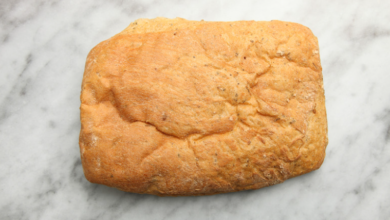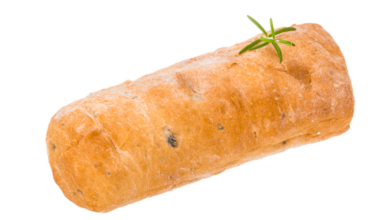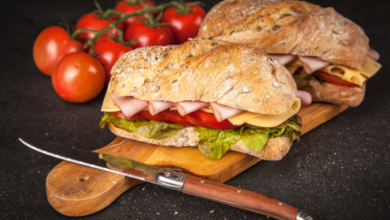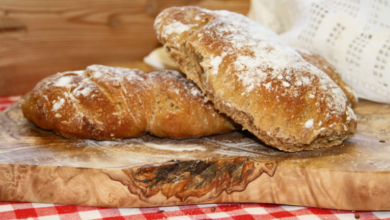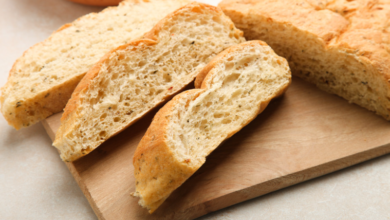Is Ciabatta Whole Wheat? Not Exactly! Here’s What It Is

What To Know
- Whether you choose to purchase or bake whole wheat ciabatta, you will enjoy a nutritious and delicious bread that is a welcome addition to any meal.
- Whole wheat ciabatta is a modern variation that uses whole wheat flour.
- Whole wheat ciabatta offers higher fiber, more nutrients, and a reduced risk of chronic diseases compared to traditional ciabatta.
Ciabatta bread, renowned for its airy texture and rustic appearance, has captivated bread enthusiasts worldwide. However, the question remains: is ciabatta bread whole wheat? Delve into this comprehensive guide to discover the truth behind this enigmatic bread.
The Definition of Whole Wheat
Before addressing the specific case of ciabatta, it is crucial to define whole wheat. Whole wheat refers to grains that contain all three components of the wheat kernel: the bran, germ, and endosperm. The bran is the fibrous outer layer, the germ is the nutrient-rich core, and the endosperm is the starchy inner portion.
Traditional Ciabatta: A Refined Flour Delight
Traditionally, ciabatta bread is made with refined wheat flour. Refined flour undergoes a process that removes the bran and germ, leaving behind only the starchy endosperm. As a result, traditional ciabatta bread is not considered whole wheat.
Whole Wheat Ciabatta: A Modern Twist
In recent years, bakers have experimented with using whole wheat flour in ciabatta bread. Whole wheat ciabatta offers a more nutritious alternative to traditional ciabatta while maintaining its signature texture and flavor.
Benefits of Whole Wheat Ciabatta
Compared to traditional ciabatta, whole wheat ciabatta offers several health benefits:
- Higher Fiber Content: Whole wheat flour is rich in fiber, which promotes digestive health and helps regulate blood sugar levels.
- More Nutrients: Whole wheat contains more vitamins, minerals, and antioxidants than refined flour.
- Reduced Risk of Chronic Diseases: Studies have linked whole wheat consumption to a reduced risk of heart disease, type 2 diabetes, and some types of cancer.
How to Identify Whole Wheat Ciabatta
When purchasing ciabatta bread, look for the following indications that it is made with whole wheat flour:
- Color: Whole wheat ciabatta will have a slightly darker color than traditional ciabatta.
- Texture: Whole wheat ciabatta may have a slightly denser texture due to the presence of bran.
- Label: Check the ingredient list for the words “whole wheat flour.”
Whole Wheat Ciabatta Recipes
If you prefer to bake your own bread, here are two recipes for whole wheat ciabatta:
- Traditional Whole Wheat Ciabatta: This recipe uses a sourdough starter and a long fermentation time to create a flavorful and airy loaf.
- Quick Whole Wheat Ciabatta: This recipe uses commercial yeast and a shorter fermentation time, resulting in a quick and easy bread that still has the classic ciabatta texture.
Key Points: Embracing the Whole Wheat Revolution
Whether you choose to purchase or bake whole wheat ciabatta, you will enjoy a nutritious and delicious bread that is a welcome addition to any meal. By embracing the whole wheat revolution, you can reap the health benefits of whole grains while savoring the culinary delights of traditional breadmaking.
Information You Need to Know
Q: Is all ciabatta bread whole wheat?
A: No, traditional ciabatta bread is made with refined wheat flour. Whole wheat ciabatta is a modern variation that uses whole wheat flour.
Q: What are the health benefits of whole wheat ciabatta?
A: Whole wheat ciabatta offers higher fiber, more nutrients, and a reduced risk of chronic diseases compared to traditional ciabatta.
Q: How can I tell if ciabatta bread is whole wheat?
A: Look for a darker color, a slightly denser texture, or the words “whole wheat flour” in the ingredient list.
Q: Can I make whole wheat ciabatta at home?
A: Yes, there are recipes available for both traditional and quick whole wheat ciabatta.
Q: Is whole wheat ciabatta as tasty as traditional ciabatta?
A: While the flavor may differ slightly, whole wheat ciabatta still offers a delicious and satisfying bread experience.
